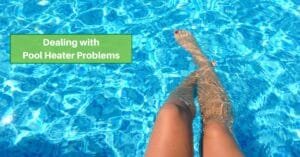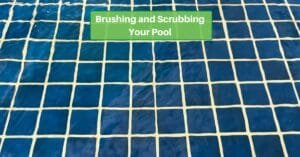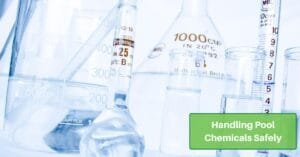It’s great to have a pool, but it also takes a good bit of work to keep it in fine shape. That’s not to say it’s not worth it – it surely is. But to keep your swimming pool in optimal condition, you have to regularly clean and treat it. Part of that requires regular testing of the water.
In this article, we’ll look at what you need to test for, how often you need to do it, and how to do it. Since treatment will vary depending on the type of pool you have and many other chemicals, we’ll come back to that topic elsewhere.
Why Test Your Pool Water
Even with a filter, pool water gets dirty. That dirt comes from many different sources. Leaves and grass clippings can blow into it. Insects or other creatures can fall in and die. Microscopic organisms will seek to make it a home.
Not only that, but you and other bathers carry in chemicals and even dirt that will wash off in the pool. Suntan oil is a big culprit, as is hair gel. Even soap left on your body after showering can accumulate in the pool. Over time, or after heavy use of the pool, all those oils and other substances will build up.
All of these contaminants can upset the chemical balance of the pool water. The water can become unhealthy to swim in. It might even become a home for algae and bacteria. These can affect how the pool looks – and even have detrimental effects on your health.
Testing your swimming pool water will help you make sure important chemical levels are within the proper parameters. When they stray outside the proper zone, you’ll know it’s time to take the proper steps to restore your pool to optimal conditions.
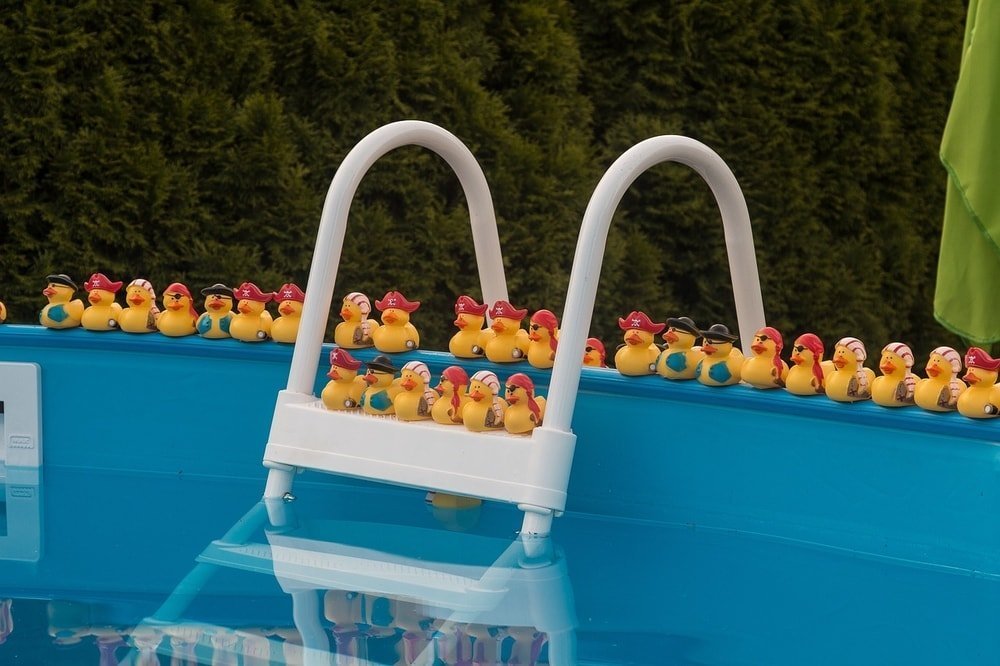
When To Test Your Pool
There are several different tests you need to do on your pool water. But not all have to be done with the same frequency.
The best time of day to test, though, is in the morning. The water and all the chemicals in it react to the heat and light, and the results can vary during the day. Doing it before the sun gets strong at noon or later will give the best results.
As far as testing frequency, this ranges from several times a week to once a month, depending on the test. Of course, you’ll want to do all the tests when you open the pool and when you’re ready to close it as well.
If it rains, it’s good to test more often. Even if the pool is covered, rainwater can seep underneath. This can radically change the pool’s chemistry, especially if it was more than a drizzle.
Chlorine and pH tests are the ones you need to do most often. Two to three tests every week while the pool is open will help you keep tabs on these crucial levels.
The total alkalinity of your water should be tested every week.
Other levels can be tested monthly. These include calcium hardness and metals (iron and copper, mainly).
Of course, if your levels for this last category are out of line, you will want to check them more often. This will help you identify the source and get the levels to the proper level.. Once it’s acceptable and stable, you can resume monthly testing.
Also, it’s a good idea to take a water sample to your local pool shop monthly. They can double-check your results and make further recommendations.
How To Collect Your Sample
Taking a sample of your water is easy. It’s just a matter of filling a small tube in a water-testing kit. When you have to do several tests, you’ll have to use a tube for each. But a good pool testing kit includes the tubes you need as well as other materials necessary for the tests.
Digital testing kits can be easier to read than some older kits that make you match color strips to determine levels of chemicals. But you can get a great digital kit that covers all the tests you’ll need (and honestly, a bit more). We like the LaMotte ColorQ Pro 11 Digital Liquid Pool & Spa Chemical Water Testing Kit, although there are other good ones out there as well.
The Taylor Technologies Inc K-2006 is a good non-digital option. It’s easy to use and use titration rather than strips. It also has 75ml bottles of reagents, so it should last you quite a long time. These are much more economical than digital testers.
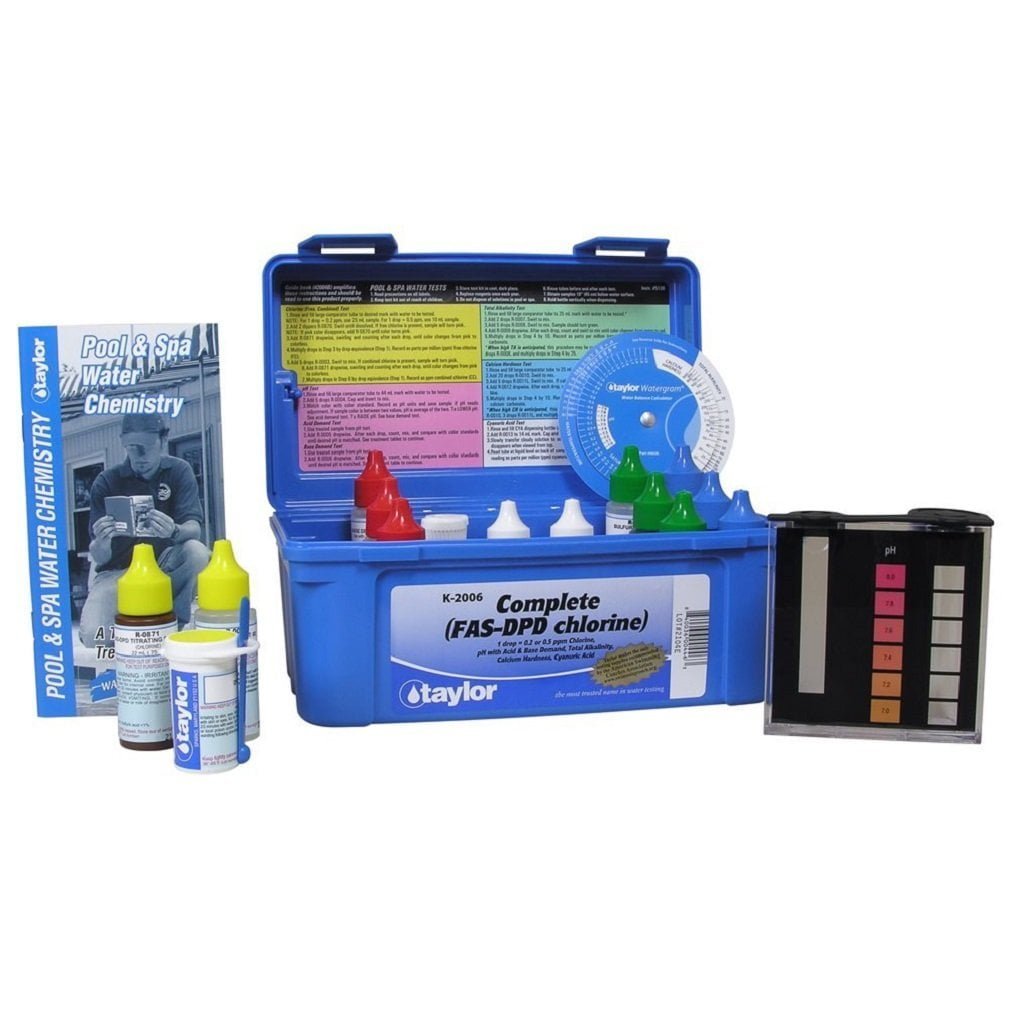
We do want to mention that neither of these kits will test the salinity of your water. This is an important test if you have a salt-water pool.
Of course, you also want to know how to get a sample, right? It’s pretty simple – but it’s more than just taking water from anywhere. To get the best reading, try to take the water from at least 18 inches below the surface. Also, you won’t get reliable readings along the edges of the pool, especially near skimmers or filters. You may not always be able to dive in and take the sample, but at least try to get it from a couple of feet from the edge.
From there, it’s as simple as filling the tube or receptacle according to the test kit’s instructions. Some call for directly filling each tube; others have a large container that you’ll use to distribute the water.
What You’re Testing For
We’ve already mentioned the things you need to test for, but let’s look a little at what they mean and why.
Chlorine
Of course, chlorine is the most common chemical used to treat swimming pools. It helps prevent the growth and spread of bacteria of algae. But it also undergoes chemical changes under the light of the sun which can make it lose its effectiveness. That’s why it’s important to check it often. The free chlorine level in your pool should be between 1.0 and 3.0 ppm.
If your pool uses some other agent, like bromine or salt, you may have to substitute the appropriate test here.
pH Level
The pH level of your water measures whether it is running toward the acidic or alkaline side of the scale. Generally, tap water is just a bit alkaline. In the pool, it can become even more so. Your target pH is between 7.4 and 7.6. Too low will cause eye and skin irritation; too high can make your chlorine inactive. If it’s high, the water may turn cloudy.
Total Alkalinity
A bit less often, you can test for total alkalinity. This is a test for “hard water,” basically. It measures the level of calcium in the water. Calcium and magnesium can increase the hardness of the water and decrease the chlorine’s effectiveness. Ugly calcium deposits can also form on your pool’s surfaces and fixtures.
Metals
Copper and iron can also build up in your water. Copper can come from rainwater or even be carried from your copper pipes. It can make your water cloudy or cause black or greenish stains around your pool. Also, if your pH runs low, the combination of copper and low pH can lead to corrosion in your filter and tubes.
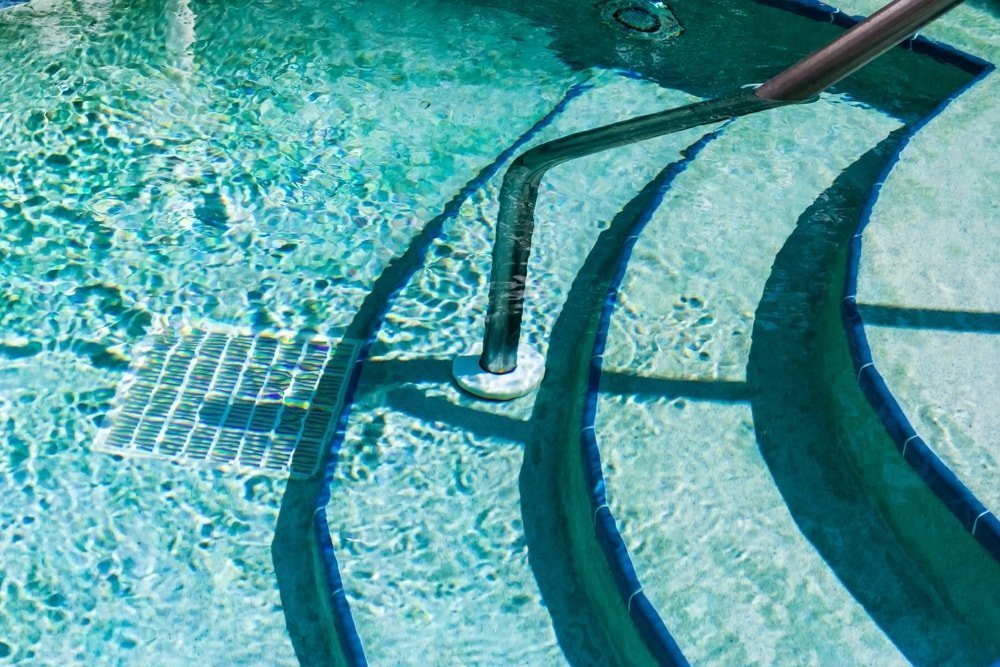
As you can see already, copper and high pH can both be causes of cloudy water. That’s a good example of why it’s important to perform all the tests on the recommended schedule.
If your water looks like rust or has a brownish color to it, it could be caused by iron. This can happen with any water supply but is more common with water from a well. It’s also most common if the water has a low pH.
Salt
Finally, if you have a saltwater pool, you’ll need to be sure that the salt levels remain in the proper range. A saltwater pool isn’t free of chlorine; the salt is converted to chlorine. So if your salt levels drop, your chlorine will too. But too much salt can overburden your pool’s chlorinator. The best level for salt is 3200 ppm, but anything from 2700 to 3400 is acceptable. Salt concentration can be tested once a month.
Conclusion
To enjoy your pool to the highest levels, you have to take good care of it. Testing the water needs to be done regularly. Fortunately, though, it isn’t hard to do. Don’t take the quality of your water for granted, and you’ll be able to enjoy it even more!


